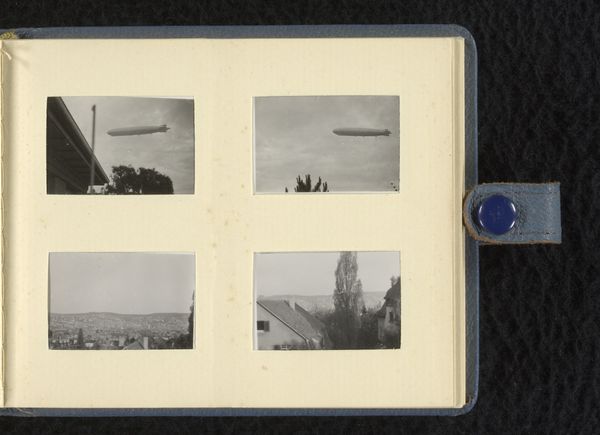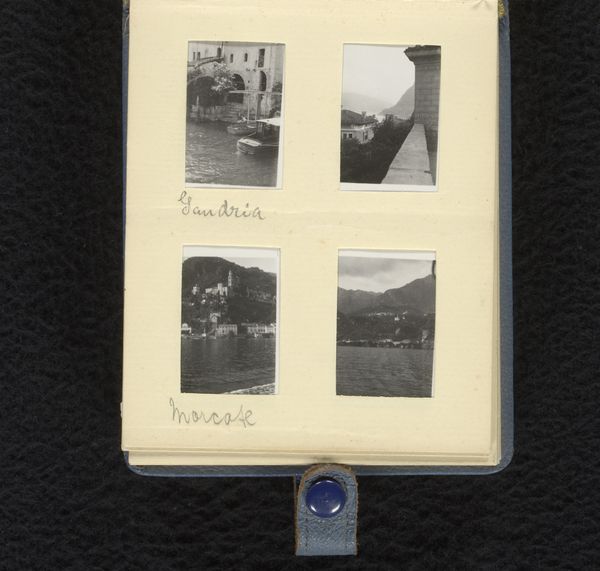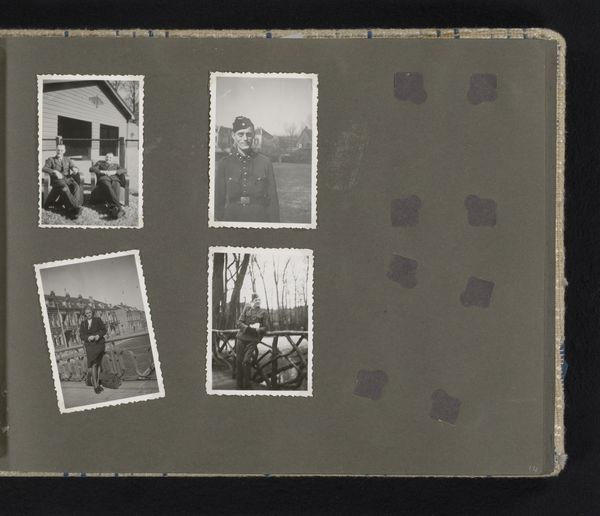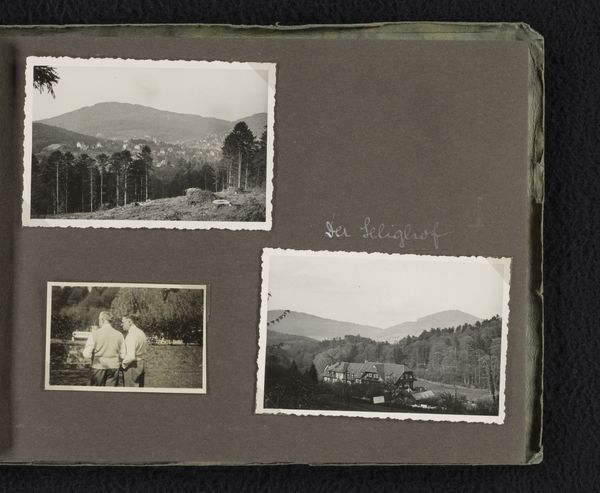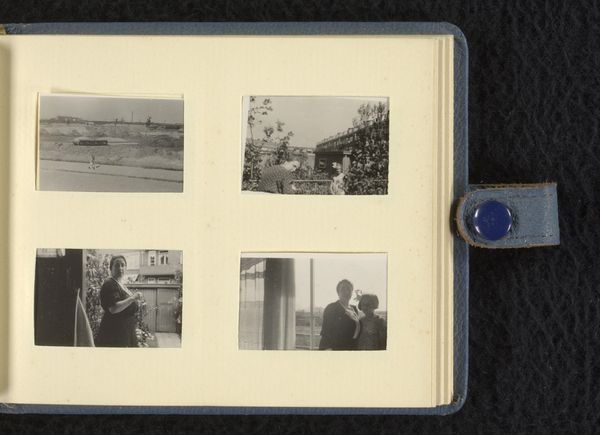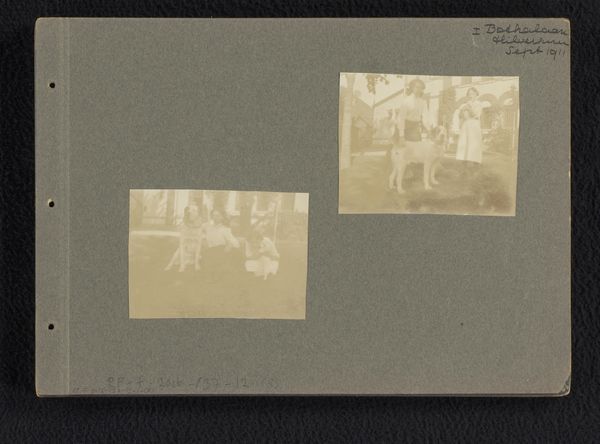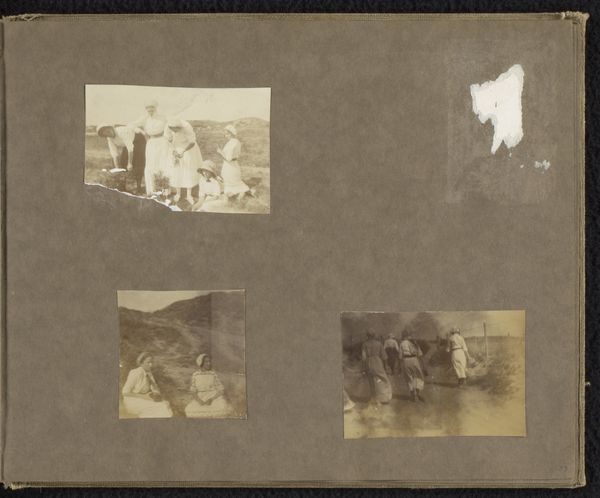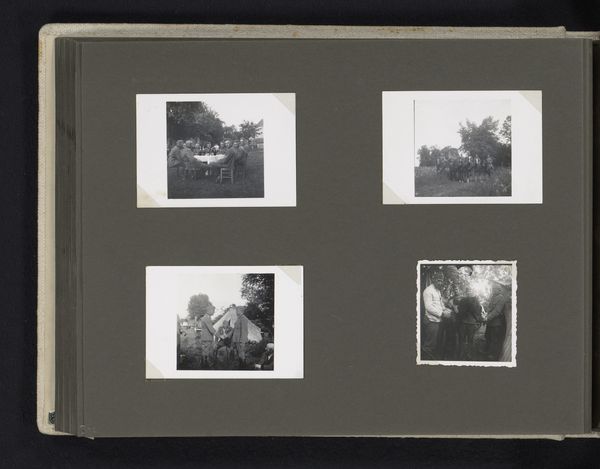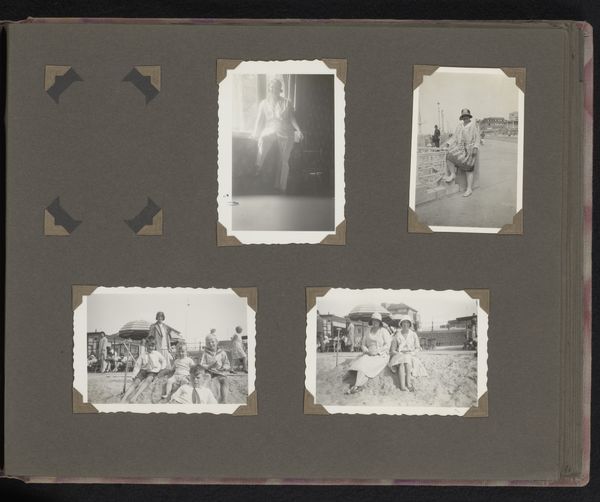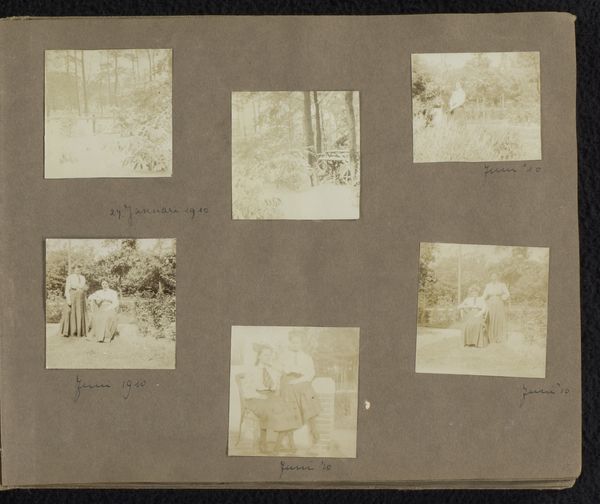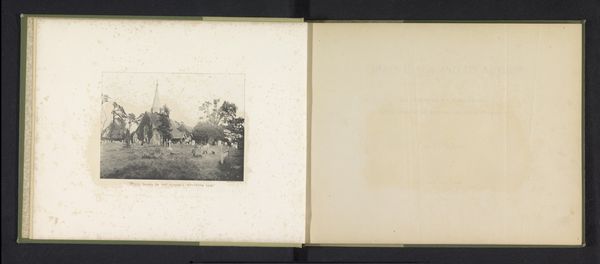
Zicht op Bristol en afbeeldingen van het graf van Isabel's grootvader Meir Wachenheimer en het graf van Ferdinand Schohl, medio tot eind 1937, Bristol/Stuttgart 1937
0:00
0:00
photography, albumen-print
#
portrait
#
landscape
#
photography
#
framed image
#
artefact
#
analog
#
albumen-print
Dimensions: height 33 mm, width 44 mm, height 85 mm, width 105 mm
Copyright: Rijks Museum: Open Domain
Editor: So, we're looking at a photo album page titled "View of Bristol and images of the grave of Isabel's grandfather Meir Wachenheimer and the grave of Ferdinand Schohl, mid- to late 1937, Bristol/Stuttgart," presented as albumen prints. The small snapshots, encased in a bound album, have a strangely intimate yet somber feeling. What story do you see within this collected memory? Curator: I see a story of displacement and remembrance deeply rooted in the context of 1937. We have a view of Bristol alongside images of graves in Stuttgart. Consider the increasing persecution of Jewish people in Germany at this time. Do you think the positioning of these images – Bristol, a place of refuge, juxtaposed with ancestral graves – speaks to the fractured identities and forced migrations of the Wachenheimer family? Editor: That's an interesting point about displacement. I hadn't thought about Bristol as a place of refuge in such stark contrast to the graves in Stuttgart. So the images serve as a powerful metaphor, connecting personal loss to a broader historical tragedy? Curator: Precisely. And think about the act of assembling this album itself. Photography becomes a tool for preserving memory, for holding onto identity in a world actively trying to erase it. How does the seemingly mundane act of documenting these graves, the "everydayness" of the landscape of Bristol, become a form of resistance? Is this an intentional memorial? Editor: That resonates strongly. The intimacy of the album, combined with the subjects of the photographs, really amplifies that sense of loss and longing for connection to a homeland that was becoming increasingly hostile. I didn't initially see it as a form of resistance, but the act of preserving these memories… Curator: …becomes a quiet, but powerful act of defiance. What does it mean to continue honoring the dead, to document your surroundings, when everything is working to uproot you? It prompts us to consider photography not just as documentation, but as a form of activism and remembrance in the face of systemic oppression. Editor: Wow, I will definitely consider this piece in a completely different light. Thanks for opening my eyes! Curator: My pleasure! I am just happy to contribute to new understandings.
Comments
No comments
Be the first to comment and join the conversation on the ultimate creative platform.

